Counterpoint: A Different View Of The Devil
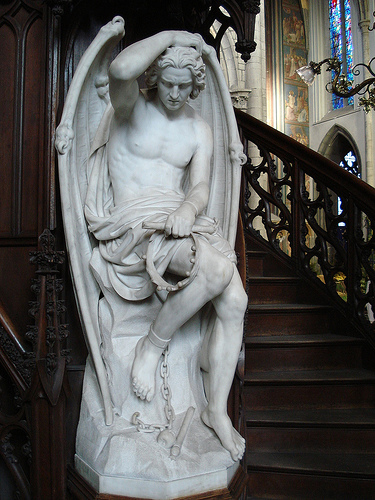

Wars Are Fought In Who's Name?
Recorded in the bible are some of the most barbarous, acts of murder ever commited and they are preformed in the name of God. Think about how many people have been killed in the name of God versus in the name of the Devil, no army has ever marched off to war in the name of the Devil.
If God, as according to the Bible, is all powerful and rules all of heaven and earth; how can the devil be a fallen angel? Doesn't God have supreme power over angels and all creation in heaven and earth? How did a "perfect angel" stand to revolt against God? If God is almighty and powerful, the Creator of all things, why couldn't he destroy the one who revolted against Him? Why would God allow an angel to destroy His creation?
Isaiah 14 is frequently used to support the fallen angel theory. The context of this chapter (Isaiah 14: 4) states, “take up this proverb against the king of Babylon”, in which it continues to speak of the greatness of Nebuchadnezzar and then his fall from power. Isaiah writes in a poetic and metaphoric way, regarding a great and powerful ruler has “fallen from heaven," and this isn't the only time he does so; Isaiah uses the 'heaven' metaphor to refer to other rulers, or leaders.
If the Devil is a “single being,” how is he able to tempt and torment 6 billion people on earth? Is he an omnipresent diety, like God? If you believe he is ominpresent, wouldn't that make him a god? Maybe the Devil has magic powers like Santa Clause? How does the Devil defy God and harm people? Would a good God let the Devil harm people?
Now if the Devil isn’t omnipresent, but has demonic minions running around causing problems; then why does God allow these demons to tempt and cause harm to those created in God's own image? Wouldn't we still have free will without a devil? I mean come on... people always wil "reap what they sow," won't they? If God can stop the demon's from causing evil, sin, or torment; but doesn’t... then isn’t God an accomplice? What would we say about a justice system who opens the doors of a jail, and allows the convicts to roam free amongst law abiding society? It seems to me that if there are billions of demons, say...one for each human on the planet... I would think that most demons would just get bored and give up. Besides what do they have to gain really?
Does it make sense? it was the early Christians who invented the devil. In many belief sysytems there is a light side and dark side to give an ideological balance. Its humans that seek out balance; not too many other known creatures have such a pre-occupation with balance of opposites. This ideology goes way back to ancient Egypt. even the Chinese have the concept of Ying and Yang.
New World Order: The Devil In The Vatican
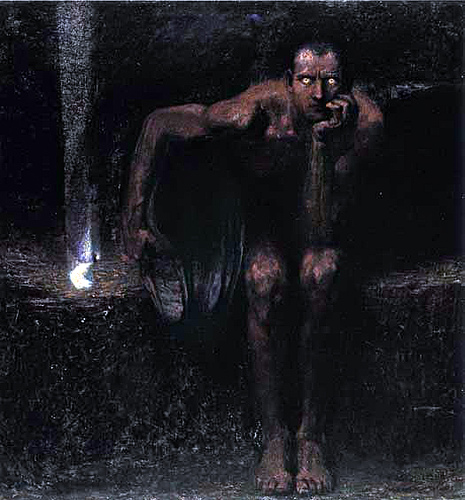
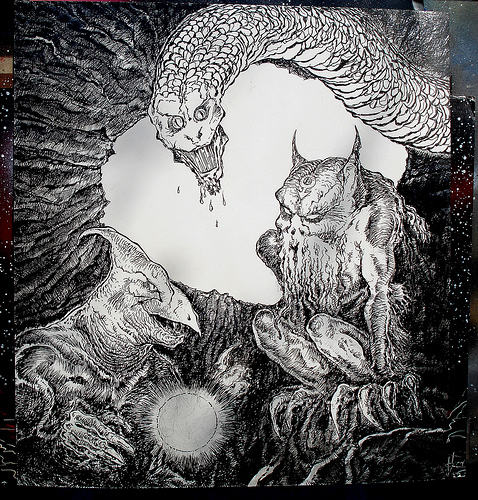

Modern Culture's Influence
Modern culture, with thanks especially from the horror genre, has had an impact on our "understanding" of paranormal, and have lead many to label these unexplainable events or moments as "Satanic." Giving discredit to those who attempt to seriously study the parapsychology phenomena, as a possible reality
Since the beginning of time man has been afraid of the dark, by nature he feared the unseen presence of evil spirits that the night brought with it. And man being man created rituals to protect himself from them. Most early societies had an evil counterpoint to good just as there was dark from light. Eventually these rituals would mold into and become religious beliefs. The face of evil would be named; some of the more famous names used were Satan,Lucifer, Beelzebub, and the Prince of Darkness. Demons and the Devil are an important part of many key religions, however the origin of the Devil is not so unholy. Judaism, which is the religion that both Christianity and Islam sprouted from, and is in many ways a recorded history of ancient mythologies and beliefs. As the Hebrews came into contact with other societies during their wanderings, the Hebrews absorbed many of other cultures mythic legends, heroes and villains...and Lucifer was one of those entities.
As many of you know from reading or research:
"...Lucifer is Latin for 'Light Bearer' and was a Roman deity associated with the planet Venus, (which was known as Lucifer in Roman astrology) before Venus, daughter of Jupiter, was promoted from Goddess of vegetation to Goddess of love and beauty with the planet renamed in her honor (Roman and Greek Gods and Goddesses were big into nepotism). Lucifer was called the 'Light Bearer' because the planet Venus was the morning star, that arose in the sky heralding the dawn. As a deity Lucifer came to personify the quest for light, which is the polar opposite of what we think about when we hear the name Lucifer. He was by no means an evil force, history reveals was Lucifer the antithesis of darkness and evil. The Hebrews never associated him with Satan, nor did the early Christians, the name had a positive connotation, was generally interpreted as meaning 'illumination' it was a popular name with the female form Lucinda or Lucy, which meant, "person who searched for knowledge.
Lucifer was adopted by the ancient Hebrews and retooled Shahar God of the dawn, Jerusalem means 'House of Shalem' and has ties to the worship of Venus the 'Bringer of Light'. In the Christian context it was cleric Origenes Adamantius [185-254CE] of the early Greek Church who first claimed Lucifer was the Devil, a concept championed by Augustine of Canterbury in 7th century England based on mistranslation. Lucifer was equated with Satan by St. Jerome in his Vulgate which claimed he was the serpent in the Garden of Eden who tempted Adam & Eve to transgress. He erroneously translated 'Heylel', which means Venus in
Hebrew, into Lucifer and an allusion to Satan when it wasn't. One of the reasons he equated Lucifer with Satan was politics, his hatred of an orthodox movement started in the 4th century by the Bishop of Cagliari, Lucifer Calaritanus, who founded a group called the Luciferians. By equating Lucifer with Satan he ensured that his heretical views on Christ's divinity and relationship with Jahova, etc, would be thought Satanic and not resuscitated.
There is no scriptural source designating Lucifer as Satan, nonetheless the Church taught he was an angel cast out of heaven because he wanted to take over the throne of Jahova. However it would be religious popular fiction which would cement Lucifer as another face of Satan, the 'Divine Comedy' by Alighieri Dante [1265-1321] and 'Paradise Lost' by John Milton [1608-1675]. It was at this period Mephistopheles entered the lexicon of Hell's overlord, the name a play on Lucifer, meaning 'not loving the light'. It has no scriptural basis, it's a medieval literary creation in the Faust novella which became an accepted part of Christian mythology in the same way Dante's view of Hell or Milton's view of Satan came to define the church position."
The "creature of darkness" in Judeo-Christian and Islamic theology is of course, Satan. Satan's origins are a bit complex but do predate the theologies which defined him as the opposite of the God of love and justice. Pre-Islamic Arabs were plagued by monsterous sand storms and the hot stinging whirlwinds that could last for days, even weeks. and would often claim lives. These Pre-Islam Arabs believed that these winds were an evil spirit called "al-Shairan" also known as "Saitan," and various rituals were performed to protect tribes from its wrath. Early Hebrews who came into contact with these Arabs absorbed tales of this evil spirit into their culture, and over time these tales were incorporated into scripture and translated "Sathane" meaning "Slanderer" or "Adversary."
"Spirituality in Judaism differs from Christian and Islamic views. To ancient Hebrews Satan had a different meaning, like in the days of the Prophet Mohammed the term 'Jihad' meant a faithful persons struggle with inner demons, temptations and worldly distractions from spiritual enlightenment, so too did Satan. Who was looked upon as a metaphor for the inner struggle, his name denoted something one struggled with spiritually, figuratively not literally, later generations redefined the legend under external cultural influences including Zoroastrianism which provided concepts of good vs. evil duality. He came to represent the forces of darkness, pure evil. Jewish scholars taught he was responsible for sins recorded in the Torah, mans fall from grace in Eden and evil extant in the world. Like Lucifer the persona of Satan changed in the Christian context during the medieval period to give an increasingly reactionary Church more power, he was cast in the cloven hoof image of a goat, the pagan God Pan. Jewish, Christian and Islamic doctrines differ on what he is in the theological scheme of things, but North Africans still live in fear of the 'al-Shairan' or devil wind."
Another pre Judeo-Christian evil is Beelzebub, commonly called 'Lord of the Flies' he is regarded as the prince of evil spirits and Satan's chief lieutenant. Like other foreign deities the Hebrew clergy branded Beelzebub a false god, and evil. The entity was embraced by Christians as another name for the Devil.
A popular character in the religious realms of darkness is the Demon. As in other cases the origins of the Demon comes from the Greek 'Daimon' which means "replete with knowledge" or "divine power" or "fate". The ancient Greeks believed there were good demons and bad demons 'Cacodemons'. Socrates said he had a Daimon who warned of danger and bad judgment, it was more accurate than omens or reading the entrails of birds. Early Christian literature created the popular horror movie image of demons.
"The word Devil is a popular blanket term for the Judeo-Christian Satan, however it has no theological foundation, it's derived from the ancient Greek 'Diabolos' meaning "adversary or prosecutor" with no particular religious connotation, introduced into Christology in the medieval period which was a time of great theological inventiveness. The widely believed home of these pseudo evil entities is Hell, the original concept of an abode of the dammed has Persian origins, but was a place where disobedient wives were dispatched. In the Judeo-Christian context Hell means different things to both groups, the ancient Hebrews adopted the concept from the ancient Greeks 'Hades' which means 'the unseen place' and 'underworld' where the spirits of the dead repose without any moral judgment. The Hebrews translated 'Hades' as 'Sheol', like the Greeks the Hebrews referred to Sheol as simply an abode of the dead, a place of waiting for final judgment. The popular image of Hell as being a place of horrendous eternal torment is a product of Christian mythology, the works of authors such as Dante and Milton whose imagery has no scriptural basis but is widely embraced nonetheless."
These myths are created from external cultural influences, from an age of fear. In our western culture, modern horror movies and novels have legitimized it and craved evil deeply in popular conscious. Those who investigate paranormal phenomena or ponder claims which are made should do so with an open mind and not feed into the notions of mythological creatures and concepts are not accepted any more.
Free Masons Land of Lucifer
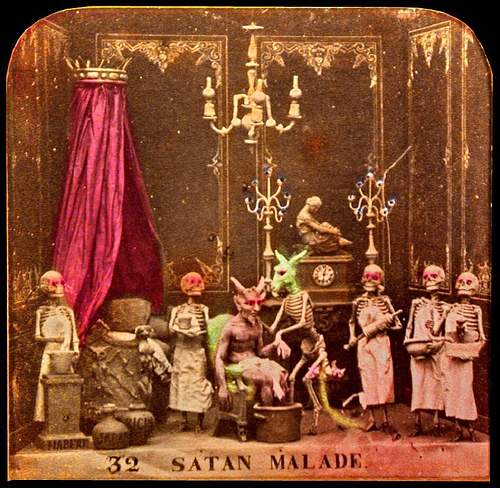

Tracing The Steps
If you ask a believer the question, "If God is so good, why is there so much evil in the world?", he or she may answer, "Because of the Devil." If you ask that believer, "Who created the Devil?", he/she may then say that the Devil has always existed, not really wanting to say that such a creation was made by the all-good God. But , if it is looked from that view, then the Devil would be on par with God (who was the original being from which all creation comes.) Well then, the faithful may say, the Devil was one of God's creatures that rebelled; "the evil, fallen angel." That would make the Devil one of God's creations, and would suggest that God is not very powerful, if "he" can lose control of "his" creations so easily.
In reality, the image of both God and the Devil are the creations of humanbeings, not vice versa. Although "religious" fanatics may violently oppose this notion; religion is not based upon concrete and absolute truths. Because absolute truth, would be whenever "God" is portrayed as having form, whether human or animal, male or female, black, white or polka-dotted, it is not the Truth. In places where the skin of the inhabitants is red, the god may have red skin, and where the skin is white, the god may have white skin, and so on. It is completely not based on actual fact. Lands conquered by opposing warriors see their god defeated as well. The conquering faction places their deity in the light of the "righteous god." The conquered country's god is most of the time realigated to being considered evil or a "devil."
America: The Daughter Of Satan?
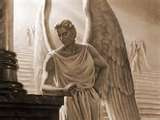
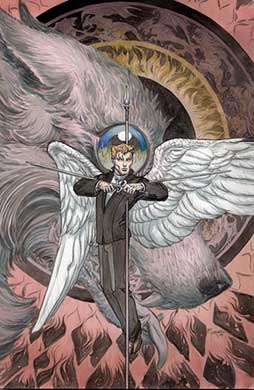
Is It Just Ego Or The Devil?
He's not the enemy of God, his name really isn't Lucifer and he isn't even evil. And as far as leading Adam and Eve astray, that was a case of 4th century bad press, from a case of mistaken identity. "There's little or no evidence in the Bible for most of the characteristics and deeds commonly attributed to Satan," insists a UCLA professor with four decades in what he calls "the devil business."
"A strict reading of the Bible shows Satan to be less like Darth Vader and more and more like an overzealous prosecutor," said Henry Kelly, a UCLA professor emeritus of English and the former director of the university's Center for Medieval and Renaissance Studies. "He's not so much the proud and angry figure who turns away from God as [he is] a Joseph McCarthy or J. Edgar Hoover. Satan's basic intention is to uncover wrongdoing and treachery, however overzealous and unscrupulous the means. But he's still part of God's administration."
Henry Kelly started his academic career at a Jesuit seminary and was ordained in four of the seven holy orders on the way to the priesthood, including the order of exorcist.
"It was at that time that I started my campaign to rehabilitate the devil — to deliver him from evil, as it were," Kelly said, "Satan: A Biography" by Henry Kelly is more than 40 years of research into the devil and religious and cultural traditions that have grown up around him, and is the third book by Kelly on this topic.
By Kelly's count, Satan only appears three times in the 45 books that make up the pre-Christian scriptures, the best known being in the Book of Job. On each occasion, Satan is still firmly part of what Kelly calls "God's administration," and his activities are done with the approval from "the Big Guy." But his actions aren't evil so much as consistent with the translation of "devil" and "satan," which literally mean "adversary" in Greek and Hebrew, respectively.
"His job is to test people's virtue and to report their failures," Kelly said.
Perhaps most surprising is not the figure Satan cuts, but his notable absences in the Old Testament. In the Bible's first reference to Lucifer, for instance, Satan doesn't appear. Originally written, the passage refers to the tyrannical Babylonian king who boasts of his conquests but who is "about to be cast to the ground." Kelly insists there's nothing more to the reference than as metaphor. "Lucifer is said to have fallen from Heaven,'" Kelly explained. "'This can't refer to a human being, so it must refer to Satan.' Subsequent church fathers found this reasoning persuasive, and so did everyone who followed them."
The only mentions of Lucifer in the New Testament (and there are three of them) refer to Jesus, Kelly said. "Jesus is called 'Lucifer' or 'the morning star' because he represents a new beginning."
In the Old Testament, Kelly said, can be found in Genesis. "Nobody in the Old Testament — or, for that matter, in the New Testament either — ever identifies the serpent of Eden with Satan," Kelly said. "The serpent is just the smartest animal, and he's motivated by envy after being jilted by Adam for Eve."
Kelly traces the correlation of Satan and the serpent to not long after the New Testament was completed. In the second-century Christian martyr Justin of Samaria first argued that Satan appeared as a serpent to tempt Adam and Eve to disobey God, according to Kelly. "It starts with Justin Martyr, who implicates Satan in the fall of Adam and Eve. By causing Adam and Eve to fall, Satan caused his own fall," said Kelly, and by the time Satan gets to the New Testament, he is evil, he's an enemy of God.
This is not to say that Satan is likeable as the chief accuser of humankind.








